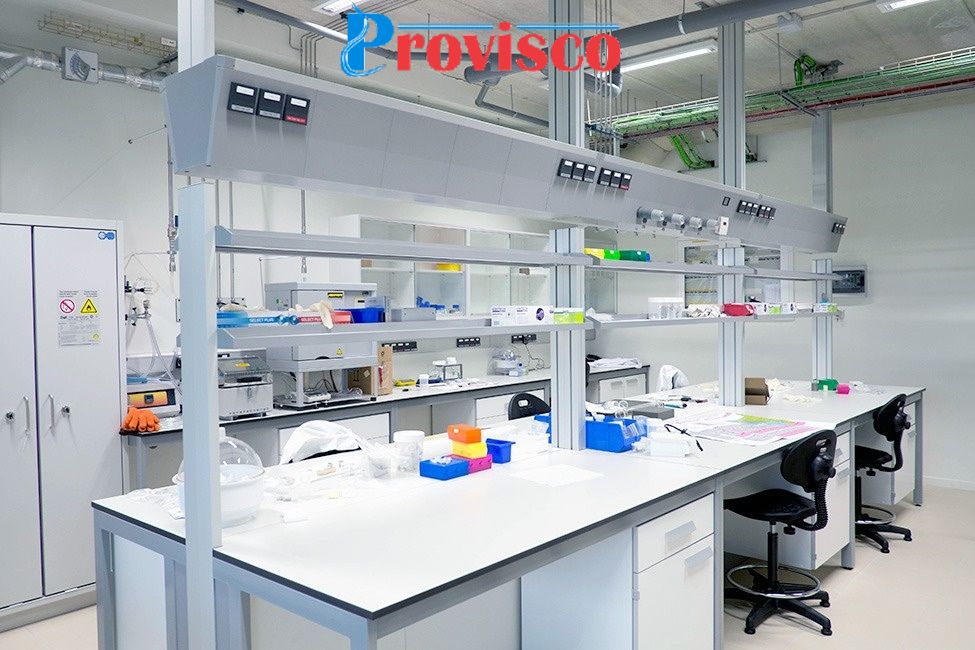Laboratory safety is essential in the ever-changing world of science and technology today. Scientists and researchers work with a variety of chemicals on a daily basis, some of which might be dangerous if not handled and stored correctly. This article examines cutting-edge lab chemical storage solutions intended to improve safety in research settings.
The Importance of Laboratory Chemical Storage
Understanding the importance of safe lab chemical storage is essential before diving into the creative alternatives. Chemical handling errors or poor storage practices can result in mishaps, injuries, and environmental risks. Effective chemical storage safeguards not just the safety of lab workers but also the purity of the compounds themselves.
Smart Chemical Storage Cabinets
A high-tech upgrade is being made to conventional chemical storage cabinets. Real-time temperature variations, humidity levels, and chemical spills can all be found in smart cabinets that are fitted with sensors and monitoring systems. Using this technology, lab staff can respond quickly to any potential problems, reducing the risk of mishaps and maintaining the chemical purity.
Software to Handle Chemical Storage
It might be challenging to maintain a lab’s chemical inventory. The process can now be streamlined with the help of cutting-edge technologies. The safety data sheets (SDS) and expiration dates of chemicals are included in a digital library of chemicals offered by these software products. This enables scientists to maintain track of their stock and guarantees that they don’t employ compounds that are out-of-date or unstable.
Improvement of Chemical Segregation
Chemicals must be properly separated in order to avoid reactions that could result in hazardous conditions. To simplify and improve this process, new approaches are being developed.
Systems for Color-Coded Labeling
Chemical labels with color coding make classification and identification easier. These labels are made to follow safety regulations and make sure that dissimilar substances are stored apart. Chemicals can be visually categorized to greatly limit the possibility of inadvertent mixing.
Database of Chemical Compatibility
The compatibility of various compounds can be determined by researchers with the aid of online databases and mobile apps. These tools enable researchers to determine if particular compounds may be securely stored together, reducing the possibility of harmful reactions.
Monitoring and Control of Temperature
The stability of many compounds depends on exact temperature regulation. This demand is met by creative solutions that also increase safety.
Climate-Controlled Storage Units
Modern storage facilities have sophisticated temperature control systems. They guarantee that compounds that are vulnerable to temperature changes stay within the predetermined range, maintaining their integrity and safety.
Systems for Remote Monitoring
Lab staff can remotely track the temperature and humidity of storage containers thanks to remote monitoring equipment. The personnel is informed of any variations by this real-time data, ensuring that storage conditions for chemicals stay ideal.
Environment-Related Issues
Innovative lab chemical storage systems also consider the effects on the environment.
Eco-Friendly Chemical Storage Solutions
In the scientific community, there is growing concern about sustainability. Using recycled materials for containers and decreasing chemical waste through proper storage and disposal methods are just two examples of the environmentally friendly storage practices that labs are implementing.
Facilities for Energy-Efficient Storage
Facilities for lab storage combine energy-efficient elements like insulation, HVAC systems, and LED lighting. These upgrades not only lessen the impact on the environment but also minimize operating expenses.
Conclusion
To improve stability success, and long-range viability in research environments, innovation in lab chemical storage solutions is critical. These advances are transforming how chemicals are handled and stored in laboratories, from smart cabinets to cutting-edge inventory management software.
FAQs
1. How can I ensure the compatibility of chemicals used in my lab?
Use online chemical compatibility databases or mobile apps to confirm whether certain chemicals can be stored safely together.
2. What are the advantages of smart chemical storage cabinets?
Smart cabinets equipped with sensors and monitoring systems can detect temperature variations, humidity levels, and chemical spills in real time – increasing safety significantly.
3. What role can color-coded labeling play in chemical storage?
Color-coded labeling helps quickly identify and segregate chemicals to minimize accidental mixing.


